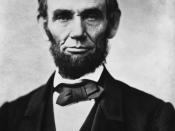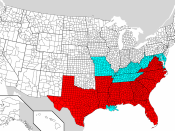One of the first challenges for the American colonies after gaining independence was to establish a government that would fit their ideas of protection of individual freedoms and power by the people. For this reason, no single person could rule, and heredity could not determine the leader; instead, he had to be chosen by merit. This is why the new country could not be a monarchy, even a constitutional one. The highest post would be President, popularly elected and limited in terms of time he could be in this position.
The next challenge was to establish exactly how much power the President would have and what controls would be set in place to ensure that he did not abuse this power. As a result, the government was split into three branches: executive, represented by the President and Presidential Cabinet; legislative, represented by Congress; and judicial, represented by the courts. Members of Congress would be elected by the voting citizens of the country and represent interests of their constituencies; judges on the federal level would be nominated by the President and confirmed by Congress, while judges on the local levels would be either nominated by state governors, with approval from state legislatures, or popularly elected.
This system received the name of "checks and balances," because each branch of the government had the duty and capacity to check the possible abuses or uncommon agendas of other branches and thus bring balance into the overall governing structure.
Finally, the most important and contentious challenge was to determine how much power would go to the central, federal government, and how much power would be retained by the states. Under the Articles of Confederation, by which the colonies operated in the first years of the country's existence, most of the power in legislative, judicial, and...


